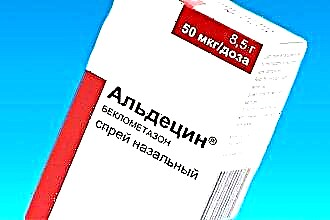Sore throat is a constant symptom of SARS, the most common disease. At the same time, patients describe their sensations as tickling, scratching, spread over the entire surface of the throat. At the same time, there are pathological conditions when the throat is very sore on only one side, or the pain syndrome is noted from above or below.
 Such a variety of manifestations is due to the anatomical features of this organ. The human throat consists of the larynx and pharynx, which includes lymphoid formations, tonsils, which play an important role in ensuring immunity. The collection of all tonsils forms a lymphoid ring.
Such a variety of manifestations is due to the anatomical features of this organ. The human throat consists of the larynx and pharynx, which includes lymphoid formations, tonsils, which play an important role in ensuring immunity. The collection of all tonsils forms a lymphoid ring.
The most important are the palatine tonsils, paired organs located in the tonsillar niches. When one of the tonsils is involved in the pathological process, or when they are predominantly affected from a certain side, a one-sided clinical picture develops.
Tonsillitis
The most common disease in which the throat hurts on one side is acute tonsillitis. It is common to get sick after hypothermia. This condition is caused by viruses, bacteria, fungi and other pathogens. Most often, it is the effect of viruses that leads to the appearance of a sore throat. However, antiviral treatment is currently not fully developed, there are no reliably effective drugs of this direction of action.
At the same time, bacteria are the most dangerous cause of acute tonsillitis. This is due to the possible severe complications of bacterial tonsillitis, the transition of the disease to a chronic form. In this case, the clinical picture, the nature of the sore throat caused by various pathogenic microorganisms, can be very similar. Most often, patients complain that the throat hurts on the left or right side. The pain intensifies when swallowing, it can be given to the ear on the corresponding side.
In this case, it is very important to determine the nature of the pathogenic agent, since antibiotics must be used for bacterial tonsillitis.
It is especially important to carry out antibiotic therapy for streptococcal pathogens. It is hemolytic streptococcus with untimely and incorrect treatment of angina that is the cause of the development of rheumatism, glomerulonephritis.
One of the factors of bacterial damage to the tonsils is an increase and pain on palpation of regional lymph nodes. In this case, the most painful are the lymph nodes on the side of the lesion. At the same time, from the opposite side, they may not even be enlarged.
For acute tonsillitis caused by viruses, the following additional symptoms are typical:
- an acute onset of the disease, when the throat became acutely ill, malaise appeared;
- the presence of clinical signs, such as aching muscles and joints, runny nose, dry cough.
An important role in the diagnosis of sore throat is played by pharyngoscopy, which can detect inflammatory changes in the tonsils. Their increase is noted, mainly on the right or left, bright hyperemia. The development of lacunar or follicular tonsillitis is characterized by the presence of purulent exudate that fills the lacunae of the tonsils or follicles. The throat begins to ache with this development of the situation gradually. Symptoms build up over several hours. The upper temperature level can reach 40 degrees, while chills are characteristic.
Pharyngeal abscess
How many days the temperature will last, and other accompanying signs persist, depends on the timeliness of the start of treatment, as well as the form of sore throat.
Correctly selected antibiotics can improve the patient's condition on the second day.
At the same time, it is not allowed to stop antibiotic therapy prematurely. In the case of untimely administration of antibiotics or in patients with weakened immunity, a purulent complication of angina, tonsil abscess or lateral pharyngeal abscess may develop.
 A pharyngeal abscess can also result from damage to the 7th and 8th tooth, osteomyelitis of the lower jaw, purulent inflammation of the mastoid or salivary gland. The leading symptom of this disease is a sore throat on one side.
A pharyngeal abscess can also result from damage to the 7th and 8th tooth, osteomyelitis of the lower jaw, purulent inflammation of the mastoid or salivary gland. The leading symptom of this disease is a sore throat on one side.
In this case, there are pronounced symptoms of intoxication. The patient's condition is severely impaired, temperature indicators can reach 40 degrees.
An objective examination allows you to detect pastiness outside of the corner of the lower jaw, sharply painful when palpating.
The pharyngoscopic picture is characterized by a protrusion of the palatine tonsil and soft palate on the affected side. Patients are subject to urgent hospitalization and treatment in a surgical department. If the operative access to the periopharyngeal abscess is difficult, its external disclosure is performed.
Pharyngitis and laryngitis
Pharyngitis and laryngitis occur with severe pain syndrome. In this case, the back wall of the throat can be predominantly affected from one side. This leads to the fact that there is predominantly a sore throat on the right or left side.
The throat hurts not only in acute processes. Diseases with a chronic course during an exacerbation are also accompanied by the development of this symptom. Factors provoking an exacerbation of chronic pharyngitis, laryngitis, tonsillitis are
- unfavorable ecological situation;
- smoking;
- decreased immunity due to concomitant severe illnesses.
These patients may have a sore throat during remission. Moreover, depending on which part of the throat cavity is affected, the left side of the throat or the right one hurts. Patients may have a prolonged subfebrile condition. With the defeat of the tonsils and the development of chronic tonsillitis, purulent deposits periodically appear.
Irradiation of pain
 Sore throat is not always caused by processes localized directly in the throat cavity. The reason when the throat hurts on the left or on the right may be
Sore throat is not always caused by processes localized directly in the throat cavity. The reason when the throat hurts on the left or on the right may be
- dental diseases;
- acute lymphadenitis;
- otitis media of the middle ear;
- acute thyroiditis.
The pain syndrome caused by caries depends on the nature of the food and is aggravated by the use of cold drinks. There is an increase in discomfort when tapping on the affected tooth.
Inflammation of the gums and oral mucosa can be characterized by unilateral lesions and pain on only one side.
For otitis media, the process is also typical when only one side is affected. In this case, the pain radiates to the neck, throat, jaw. Depending on the nature of the defeat, it can be dull, aching or shooting.
A sign that can confirm precisely the pathology of the ear is an increase in pain when pressing on the tragus.
Otitis media can be an independent disease or, more often, a complication of ARVI. It is possible to determine if only the ear hurts, or if other ENT organs are involved in the process, by conducting instrumental studies. An inflammatory process in the throat is evidenced by a hyperemic, edematous mucous membrane found during pharyngoscopy. An otoscopy performed will confirm the presence of an inflammatory process in the ear.
Inflammatory processes in the thyroid gland are accompanied by pain in the lower throat. In this case, the initial symptom is complaints of difficulty in swallowing, a feeling of a lump. On palpation of the neck, the endocrinologist discovers an enlarged and somewhat painful formation of a dense consistency. The skin is not changed.
With the development of purulent inflammation, the symptoms increase.Soreness increases, the temperature rises. The skin becomes bright pink, hot to the touch. There is a sharp pain on palpation of this tumor-like formation, it becomes soft.
 Acute lymphadenitis can characterize an inflammatory process, or be an independent disease. If the nodes are located on the side of the lower jaw, then patients may complain: I have a sore throat. An independent process limited by the lymph nodes can be discussed only by excluding diseases of the oral cavity and pathology of the ENT organs.
Acute lymphadenitis can characterize an inflammatory process, or be an independent disease. If the nodes are located on the side of the lower jaw, then patients may complain: I have a sore throat. An independent process limited by the lymph nodes can be discussed only by excluding diseases of the oral cavity and pathology of the ENT organs.
Dangerous is the reddening of the skin over the lymph nodes, a local increase in temperature. This development of the situation needs to be monitored by a surgeon. If the ongoing antibiotic therapy does not lead to a result, surgical treatment is prescribed.
Oncopathology
Enlarged lymph nodes can be a sign of cancer. To clarify the diagnosis and exclude such a serious pathology, it is necessary to pass a general blood test. Increased ESR, leukocytosis, leukopenia, signs of anemia that persist after regression of clinical symptoms indicate the need for a more thorough examination of the lymph nodes by related specialists.
Tumor processes in the body can be localized in various organs and tissues. Any part of the throat, pharynx, or larynx can be affected. Depending on the localization, the main symptom will be the feeling of a foreign body, pain in the throat, discomfort when swallowing, and a persistent cough. Patients note that the throat began to ache gradually. First, there was a feeling of a lump when swallowing, periodically painful sensations began to be noted. Over time, they became permanent, not related to the time of day or food intake.
Catarrhal symptoms usually do not accompany this symptom. The lesion can be located in the throat on the left or right, in different parts of the pharynx and larynx, in the lower part, upper, or on the sides of the pharyngeal ring. Depending on this, chronic sore throat may be accompanied by a dry cough, nasal voice, or hoarseness. Somewhat later, additional symptoms such as malaise, sweating, prolonged subfebrile condition, and lack of appetite may appear. In addition to pharyngoscopy, diagnostic biopsy helps to clarify the diagnosis.
Allergy
 Periodically sore throat when exposed to allergens. The deterioration of the condition is due to the interaction of the body with substances hazardous to it. In some patients, nasal congestion and rhinitis are the main symptoms. Others have dyspeptic disorders and skin rashes.
Periodically sore throat when exposed to allergens. The deterioration of the condition is due to the interaction of the body with substances hazardous to it. In some patients, nasal congestion and rhinitis are the main symptoms. Others have dyspeptic disorders and skin rashes.
A significant part of patients note a sore throat, difficulty breathing, the appearance of a cough with difficult to separate sputum. After the elimination of the allergen, the use of antihistamines, there is a decrease in sore throat within a short period of time.
Most often, one-sided sore throat is a symptom of ARVI, which are widespread and occur several times a year. Given the epidemiological situation, clarification of the diagnosis is not difficult. At the same time, this symptom may also be a sign of severe pathology that requires urgent action. In order for the treatment to be timely and effective, it is necessary to consult an otolaryngologist, carry out pharyngoscopy, if necessary, additional examinations.



